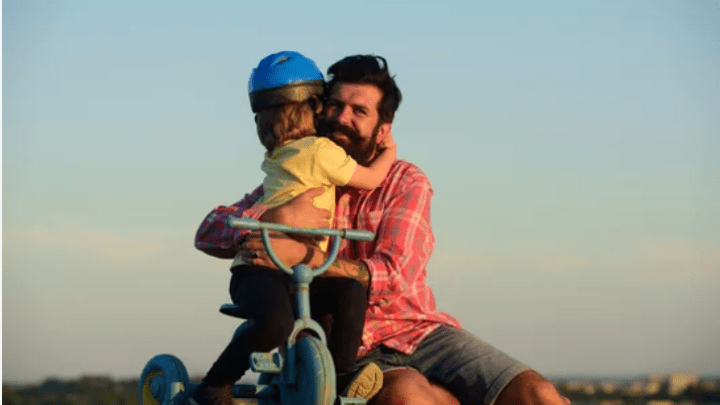Introduction
If you've ever found yourself staring at the endless array of baby gear options, wondering what's actually essential and what's just a nice-to-have, you're not alone. And one item that often falls into that grey area is the footmuff. Do you really need one for your little bundle of joy?
Well, let's start by saying that every baby is different, and what works for one may not work for another. But here's the truth: footmuffs can be a game-changer when it comes to keeping your baby cosy and comfortable, especially during those chilly winter months. But before you go adding it to your shopping cart, let's dive deeper into the world of footmuffs and explore whether they're truly essential baby gear or just another item that will end up collecting dust in the nursery.
What Are Footmuffs?
Footmuffs are a popular accessory for parents with young children, especially during the colder months. They are essentially cosy, insulated sleeping bags for strollers and car seats, designed to keep your baby warm and comfortable while on the move. The footmuff typically attaches easily to the stroller or car seat and provides a snug enclosure for your baby's lower body, including their feet. Made from soft and warm materials like fleece or down-filled fabric, footmuffs offer an extra layer of protection against chilly temperatures, wind, and even light rain or snow. They often come with features like adjustable straps, zippered openings, and removable foot covers for added convenience. Whether you're taking a stroll in the park or running errands around town, a footmuff can help ensure that your baby stays cosy and content throughout your outing.
The Pros of Using Footmuffs
Using a footmuff for your baby's stroller or car seat can provide numerous benefits and enhance their overall comfort. Firstly, footmuffs are designed to keep your baby warm and cosy in colder weather conditions. The soft and plush interior lining of footmuffs provides insulation and protects your little one from chilly winds, ensuring they stay snug and comfortable during outdoor adventures. Additionally, footmuffs often come with adjustable features such as zip closures or drawstrings, allowing you to easily customise the fit and temperature regulation according to your baby's needs.
Moreover, footmuffs can also serve as a protective barrier against dirt, spills, and other messes. With a water-resistant or washable outer shell, footmuffs make it easier to clean up any accidents or spills that may occur while on the go. This not only helps in maintaining the cleanliness of your baby's stroller or car seat but also ensures that your baby stays in a hygienic environment.
Furthermore, footmuffs often come with added features such as harness slots or openings for easy access to the safety straps of the stroller or car seat. This eliminates the need for removing the footmuff every time you buckle your baby in, making it more convenient and saving you time during outings.
Lastly, using a footmuff adds an extra layer of cushioning and support for your baby's legs and feet. The soft padding inside the footmuff provides gentle support and helps alleviate any discomfort caused by extended periods of sitting.
With all these benefits combined, it is clear that using a footmuff can greatly enhance your baby's comfort while out and about in their stroller or car seat.
The Cons of Footmuffs: Are They Really Necessary?
Let's discuss the question on every parent's mind - are footmuffs really necessary? While footmuffs can be a convenient accessory for keeping your baby warm and cosy during colder months, there are some cons to consider before investing in one.
One of the main drawbacks of footmuffs is their limited use. Most footmuffs are designed for use with strollers or car seats, meaning they may not be applicable in all situations. If you primarily use a baby carrier or prefer to carry your little one in your arms, a footmuff may not be necessary.
Footmuffs can add extra bulk to your baby's gear, making it more difficult to navigate crowded spaces or fit everything into your car. This can be particularly challenging if you already have limited storage space or need to travel frequently. Additionally, the added weight of a footmuff may cause discomfort for both you and your baby during long outings.
While footmuffs are designed to keep your baby warm, it's important to consider the potential risk of overheating. Babies have limited ability to regulate their body temperature, so it's crucial to monitor them closely when using any type of insulation. If you live in a milder climate or tend to overdress your little one, a footmuff may not be necessary and could lead to discomfort.
Ultimately, the decision on whether or not to invest in a footmuff depends on your specific needs and circumstances. Consider factors such as climate, mode of transportation, and personal preferences before making a final decision.
Alternatives to Footmuffs: Strollers With Warm Padding
When it comes to keeping your baby warm and comfortable during those chilly winter walks, footmuffs are often touted as the go-to solution. However, they may not be essential baby gear after all. There are alternatives available that can provide the same level of warmth and comfort for your little one. One such alternative is strollers with warm padding. These strollers are designed with insulated fabrics and extra layers of padding to keep your baby cosy in colder temperatures. They offer the convenience of being able to use your existing stroller while still providing the necessary warmth. Additionally, strollers with warm padding are often adjustable, allowing you to customise the level of insulation depending on the weather conditions. So, if you're looking for an alternative to footmuffs, consider investing in a stroller with warm padding to keep your baby snug and happy during your outdoor adventures.
Other Ways to Keep Your Baby Warm
While footmuffs can be a convenient accessory for keeping your baby warm during chilly weather, they are not the only option available. There are several other ways to ensure your baby stays cosy and comfortable without the need for a footmuff.
- Layering Clothing: One of the simplest ways to keep your baby warm is by layering their clothing. Start with a base layer of breathable fabric, such as cotton, and then add additional layers depending on the weather. This allows you to easily adjust their clothing to suit the temperature, ensuring they stay warm without overheating.
- Insulated Stroller Blankets: Insulated stroller blankets are another great alternative to footmuffs. These blankets are designed to fit securely over your baby's stroller and provide an extra layer of warmth. They are often made from soft, cosy materials and feature insulation to trap heat and keep your baby comfortable.
- Baby Carrier Covers: If you prefer to use a baby carrier instead of a stroller, there are also covers available specifically designed to keep your baby warm while in the carrier. These covers can be easily attached to the carrier and provide protection from the elements, including wind and cold temperatures.
- Hats and Mittens: Don't forget about the importance of keeping your baby's extremities warm. A hat and mittens can go a long way in ensuring your baby's head and hands stay cosy. Look for options made from soft, breathable materials that are easy to put on and take off.
By exploring these alternative options, you can find the best solution for keeping your baby warm and comfortable without necessarily relying on a footmuff. Ultimately, the choice comes down to personal preference and the specific needs of your baby.
Conclusion
In conclusion, whether or not footmuffs are essential baby gear ultimately comes down to personal preference and the climate in which you live. While they can provide added warmth and comfort for your little one, they are not a necessity for every parent.
If you live in a colder climate or frequently take your baby outdoors during the winter months, a footmuff may be a worthwhile investment to keep your baby cosy and protected from the elements. However, if you live in a milder climate or prefer to dress your baby in layers, a footmuff may not be necessary.
Ultimately, the decision to use a footmuff should be based on what you feel is best for your baby and your specific circumstances. As with any baby gear, it's important to consider safety, comfort, and practicality when making your decision. Check out our range of footmuffs here at For Your Little One.


